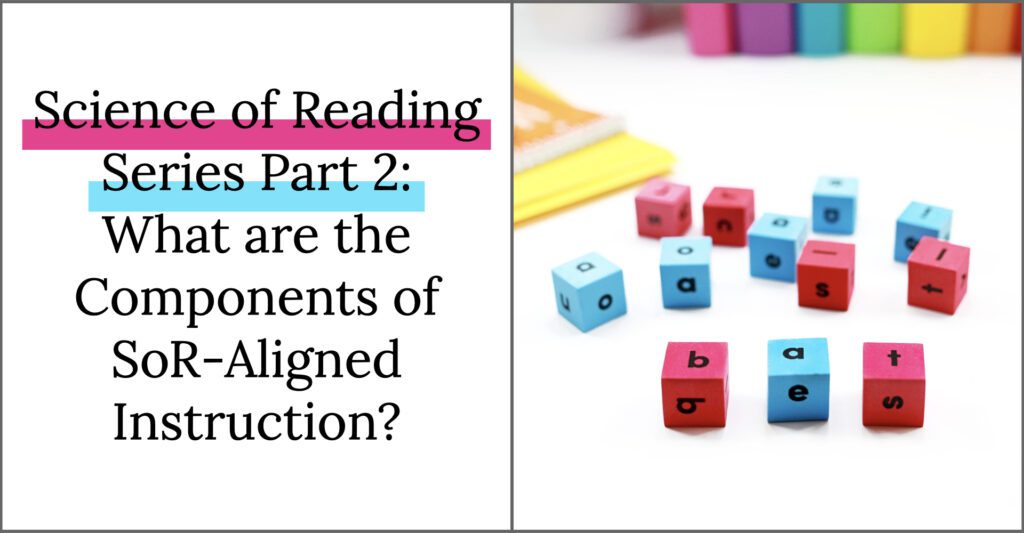
Welcome back to our Science of Reading deep-dive. In the first post in this series, we talked about what the Science of Reading is and why it is so important right now. Let’s get into the nitty-gritty and explore what this actually looks like in the classroom.
The Simple View of Reading
We touched on the Simple View of Reading in our last post. Miss that? You can check it out here! I love so visual to support learning, so I was thrilled to find the Scarborough’s Rope. Also known as the Reading Rope, this image shows eight strands of string that are woven together to create a strong rope. Each strand represents one of the skills necessary for skilled reading to happen.
Under the umbrella of decoding, readers need the skills of:
- phonemic awareness
- sight word recognition
- decoding
Under the Language comprehension umbrella, readers need the skills of:
- background knowledge
- vocabulary
- language structures
- verbal reasoning
- literacy knowlege
Knowing that ALL of these components come together to support readers can help us:
- figure out gaps in our own understanding as teachers
- observe areas that our students may thrive or struggle
- make sure that our literacy instuction is addressing each of these skills
3 Must-Haves for Science of Reading-Aligned Instruction
Now we know what skills are necessary for skilled reading. But how do we address those skills in the classroom? Don’t worry, the research has got us covered with that, too! Known as Structured Literacy, researchers have spelled out best practices for teaching reading.
Even better? Congress decided back in 1997 to package all this fantastic research up in a nice little document. Twenty-five years later, their recommendations are still the go-to instruction methods in school districts across the country. (Want to check out that document? Find it here).
Let’s look into the main components of reading instruction.
Phonics Instruction
When it comes to phonics, students need explicit and systematic instruction in decoding (reading) and encoding (spelling). Reading comes from students being able to break apart the sounds they hear in spoken language and attach letters or groups of letters to those sounds. As students are able to do this more quickly, they will be able to see or hear parts of words and more automatically read them. To establish and secure these orthographic mapping skills, all students need explicit and systematic phonics instruction.
“Explicit and systematic” with regard to phonics instruction means that:
- it is consistent instruction for all students
- we tell our students what we are teaching and how it builds on previous learning
- it follows a research-based sequence of instruction
This does not come by memorizing long lists of words. Instead, as we help our students secure more and more chunks of words to memory, they can quickly solve words that they read.
Fluency Work
Phonics instruction is awesome. But we know that our students need opportunities to put these skills into practice. Enter: decodable books and passages! The key here is that students can solve the majority of the words in the book. Not necessarily that they have all of the words in the book memorized, but that they have practiced the skills to solve all of the words in the book.
Sometimes, we may hear the terms decodable books, leveled books, easy readers, or pattern books used interchangeably. In this case, they’re not all interchangeable.
You may be familiar with a leveled reader or a pattern book- for example, a book that says “I like apples” on page one, and, “I like pizza” on the next page and so on for the whole book. In these types of books, it is unlikely that a student has practiced and mastered the phonics skills to decode every one of the foods that follow the words, “I like…” even if they can solve the words “I” and “like.” To read the book, students must either rely heavily on the pictures or look at the first letter and guess at the word. In either case, we are reinforcing poor reading skills. These strategies will not help when they’re reading a high school textbook- or even a chapter book in third grade.
With decodable books and passages, our students are confidently practicing solving the words that they have had instruction on how to solve, instead of catching onto the pattern and guessing at words. Building frequent reading of decodable books and passages into our small groups and independent reading times will support our students’ fluency and ability to solve words quickly and confidently.
Vocabulary and Background Knowledge
Alright, are you with me so far? Now that we’ve got an understanding of phonics and fluency, let’s talk about the skills our students need to understand what they’re reading. That’s where the Vocabulary and Background Knowledge piece of the Simple View of Reading comes in. The big takeaway here is that to be skilled readers, our students need consistent exposure to and practice with vocabulary, language structures, and background knowledge in a variety of subjects and areas. This is key in leveling the playing field in so many ways- across socio-economic status, race, languages, and more.
Exposing our students to vocabulary and concepts:
- builds background knowledge
- allows for practice with language structures, grammar, and literacy components
- gives our students an understanding of concepts that may be above their reading level
- builds a bank of vocabulary for all of our students
By explicitly making time to teach this content, we are giving our students relevant background knowledge, vocabulary, and literacy skills. When they come across these words and concepts during independent reading or work, they will understand what they are reading about.
I hope that these components are resonating and making sense. I know it’s a lot of information. If you’re ready to take this off of the blog and into your classroom, we’ll get there in the next post. Until then, I’d love to know what questions you’ve got so far? What’s resonating with you?


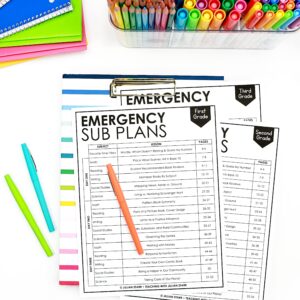

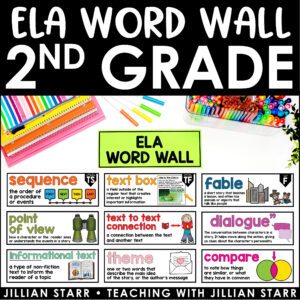
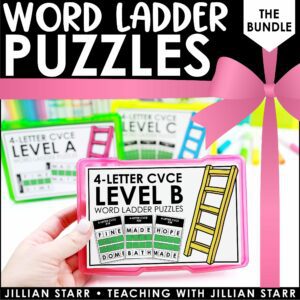
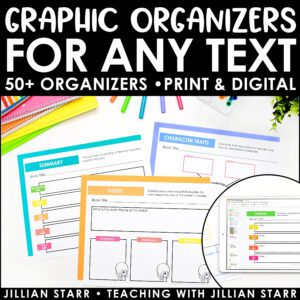
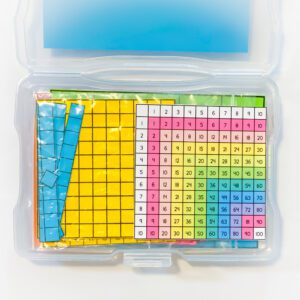




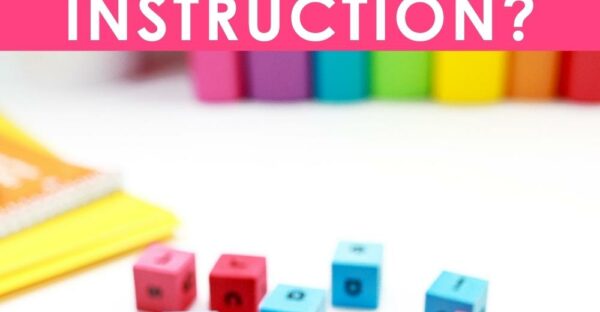
Leave a Comment